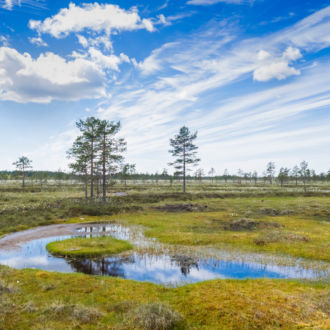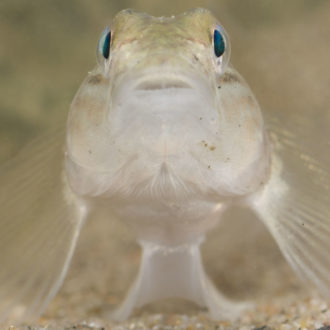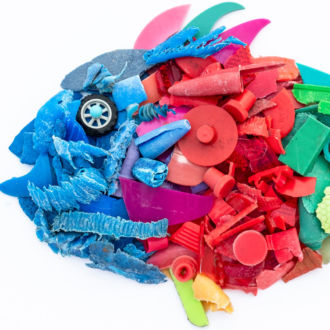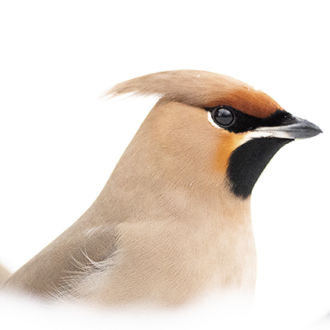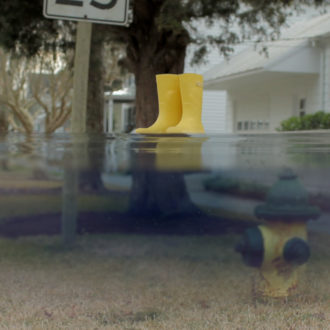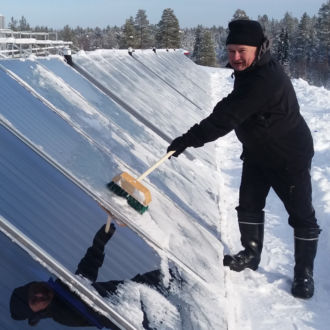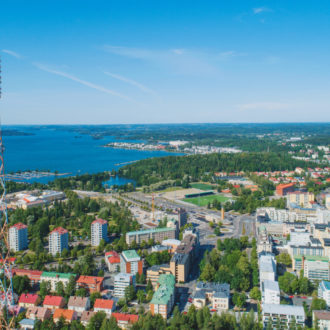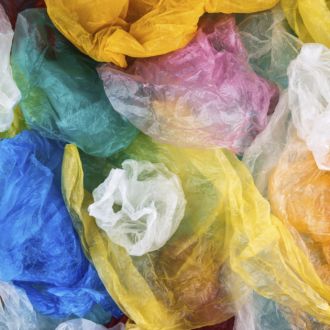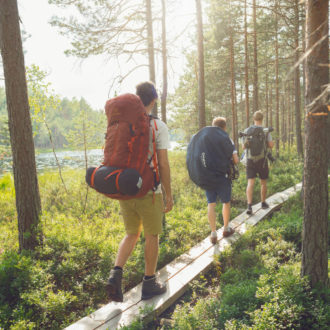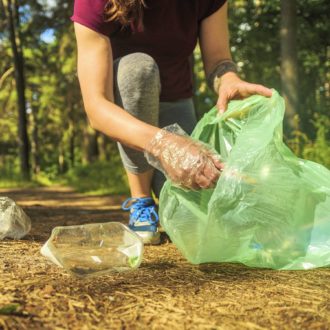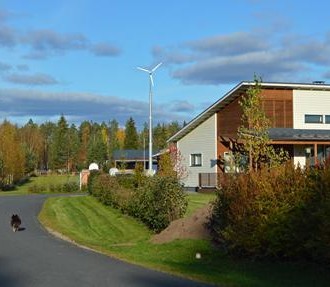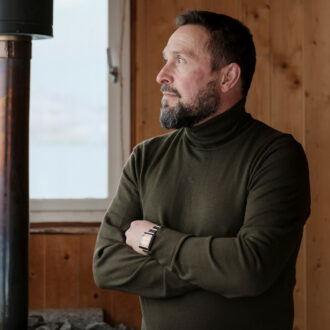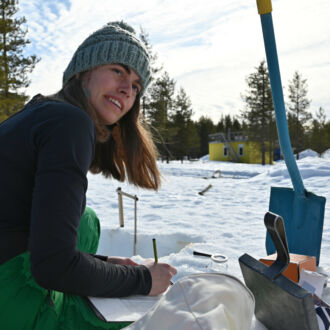What are people, companies and governments in Finland doing as awareness of climate change and other environmental challenges continues to grow? For April 22, 2022, we list 22 projects, policies, programs and actions that provide glimmers of hope.
Our selection is in no particular order, and we readily admit that we don’t have space to include everything we’d like to mention. However, we believe there’s something here for everyone: food, nature, clothing, computers, cars, bottles, sustainability, carbon neutrality, circular economy and more.
By ThisisFINLAND staff unless otherwise noted
One Earth Day isn’t enough
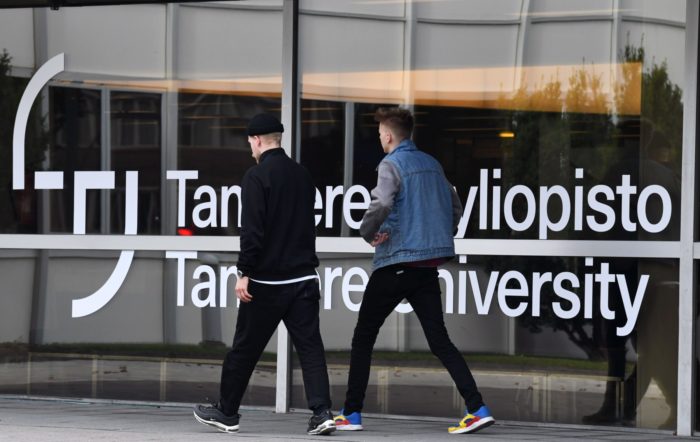
A Tampere University student association called Complex helped get all of April labelled as Sustainability Month.Photo: Jussi Nukari/Lehtikuva
The student association of the Leadership for Change master’s degree program at Tampere University in central western Finland is called Complex. It’s a leading organisation within the international Climate Students Movement. Not satisfied with just one Earth Day, Complex helped get all of April labelled as Sustainability Month. Throughout the month, they’re campaigning to reorient people’s actions towards climate change and sustainability, within and beyond the university. Events include a session on eco-anxiety, a growing concern in the sustainability field, with multidisciplinary researcher Panu Pihkala.
By Emma De Carvalho
Climate courses of action
The University of Helsinki and more than 15 other universities around the country are active in Climate University, which offers free courses for “everyone who wants to make the sustainability transition in society real.”
Oat-based delicacies
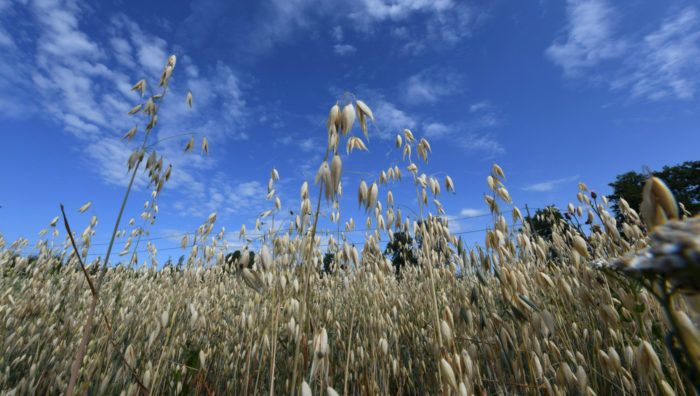
A field of oats awaits harvest in southern Finland.Photo: Jussi Nukari/Lehtikuva
A recent report by the UN’s Intergovernmental Panel on Climate Change noted that emerging food technologies, such as plant-based alternatives to animal-based food products, can bring substantial reductions in greenhouse gas emissions. In recent years, big Finnish brands such as bakery and confectionary Fazer and dairy producer Valio have gotten into the game, rolling out oat-based beverages and yoghurts.
Carbon neutrality by 2035
Finland has set itself the ambitious goal of becoming carbon neutral by 2035. “Climate change, loss of biodiversity and overconsumption are different aspects of the same sustainability crisis,” according to the Ministry of the Environment. Government and business have coordinated on climate roadmaps in 14 different sectors to achieve faster reductions in emissions.
Don’t be such a chicken!
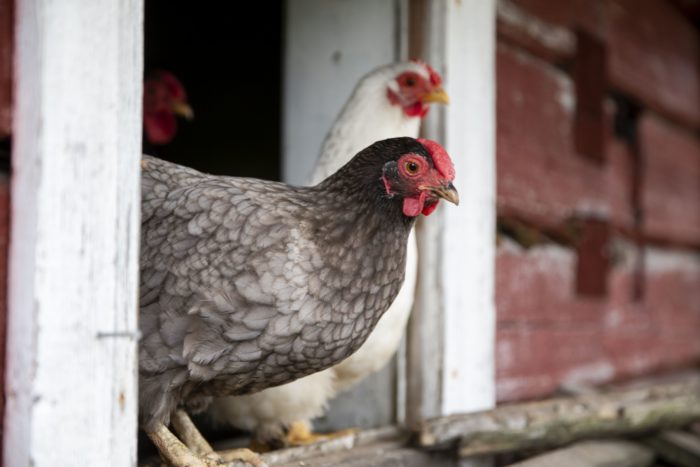
Will eggs become obsolete?Photo: Kaisa Siren/Lehtikuva
Who would have guessed that the food industry uses about 1.6 million tons of protein powder from chicken egg whites annually? The University of Helsinki’s Future Sustainable Food Systems group and the VTT Technical Research Centre of Finland have produced ovalbumin – a protein found in chicken eggs – by inserting its genetic blueprint into a fungus, which then secretes the stuff. Compared to its “chicken-based counterpart,” writes VTT, the fungus-based process reduces land use by almost 90 percent and greenhouse gas emissions by 31 to 55 percent. Cellular agriculture also avoids animal welfare concerns. Onego Bio, a startup spun off from VTT, recently secured ten million euros in venture capital funding and is setting up pilot production of the protein in Finland. Meanwhile, Finnish company Solar Foods uses an apparently magical process to create edible protein powder from carbon dioxide.
Circular strategy for 2035
Transitioning to a circular economy is another step in achieving carbon neutrality. Government ministries, research institutions, companies, business sector representatives, local governments and a 50-person citizen jury all participated in preparing a strategy for the transition, also with a target date of 2035. Circular economy means using materials efficiently and sustainably, as well as sharing, leasing, repairing and recycling products.
Putting a lid on waste

A convenient bottle-return system helps ensure that beverage containers get recycled.Photo: Emilia Kangasluoma
Recycling beverage bottles and cans has been routine for Finnish people since the 1950s; a convenient deposit system helps ensure that more than 90 percent of beverage containers are returned for recycling. This, in turn, enables other progress: Helsingin Sanomat, Finland’s largest daily, reports that by the end of May 2022, major beverage manufacturer Sinebrychoff will have transitioned to using only recycled plastic for all half-litre soft drink bottles filled at its plant. This reduces the need for new plastic by about 300 tons per year. Meanwhile, Kamupak, a Finnish company founded in 2018, is minimising waste from take-away food packaging by offering reusable containers with a return system similar to bottle deposits. Kamupak’s products reduce emissions by an estimated 72 to 95 percent compared to their disposable counterparts.
Sustainability benefits business, too
Kauppapolitiikka (Trade Policy), a magazine published by the Ministry for Foreign Affairs of Finland, cites a survey by Business Finland of more than 500 small- and medium-size businesses, in which 96 percent of respondents found that sustainability benefitted their operations. While it is sometimes challenging to make sustainability part of your business, it shows results in competitiveness, brand value, sales growth and future prospects (link in Finnish).
Data-generated heat
More than a decade ago, Google opened a data centre in a former paper mill in Hamina, southern Finland. Other companies followed, with Microsoft announcing in March 2022 that it will build a data centre near Helsinki with “the world’s largest scheme to recycle waste heat from data centres.” Heat from the site will become district heating for Kauniainen, Espoo and Kirkkonummi, all of them municipalities just west of the Finnish capital.
Superefficient data centre houses supercomputer
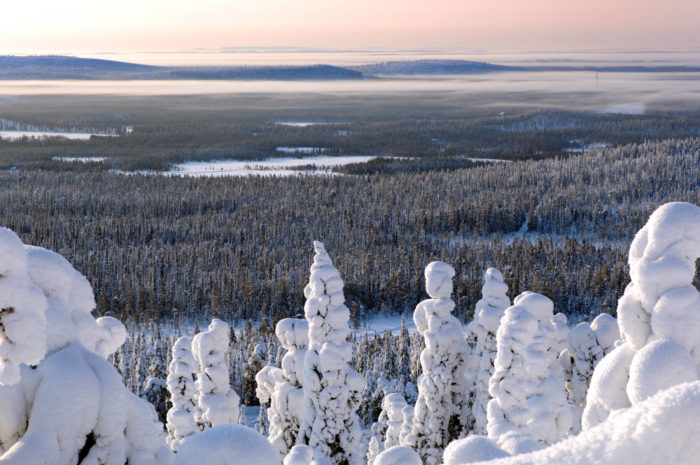
Is it a coincidence that a data centre in Finland has a supercomputer called LUMI? We think not. (Lumi means “snow” in Finnish).Photo: Visit Finland
The CSC data centre in Kajaani, 475 kilometres (300 miles) north of Helsinki, is one of the world’s most eco-efficient. It is also home to LUMI, one of the newest and most competitive supercomputers, the result of a collaboration between ten European countries. The name stands for Large Unified Modern Infrastructure, but lumi also means “snow” in Finnish.
Low-carbon built environment
Together with Business Finland, the Ministry of the Environment is running the Low-Carbon Built Environment Programme. It will finance climate work to develop low-carbon technologies, services and practices for all parts of the built environment, including buildings, infrastructure and more. Forty million euros in funding will be available to businesses, municipalities and other stakeholders.
Sustaining life

Many people are looking for ways to make sustainability a part of their daily lives.Photo: Vesa Tyni
How can regular people live a more sustainable lifestyle? If cities and municipalities offer an opportunity to recycle waste, citizens are often happy to do it. Of course, there are also many other things you can do, wherever you live. ThisisFINLAND features reporting on how people in Turku, southwestern Finland, and Kerava, just north of Helsinki, make sustainability a natural part of their everyday lives.
Devising solutions for devices
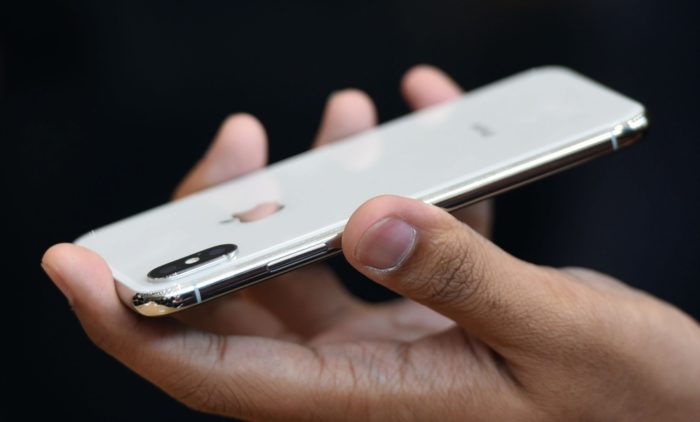
Comptek has found a way to reduce power consumption in devices, while Swappie has built a business out of refurbishing and reselling used smartphones.Photo: Josh Edelson/AFP/Lehtikuva
Comptek, a company spun off from research at the University of Turku, in southwestern Finland, has found a way to reduce the power consumption of compound semiconductor components such as those in smartphones, displays, wearables and autonomous vehicles. If implemented in billions of devices worldwide, the result would be a huge reduction in CO2 emissions. Meanwhile, another Finnish company, Swappie, found a surprisingly successful niche in buying, refurbishing and selling used smartphones, prolonging the devices’ lifespan. Much of a phone’s environmental burden comes from the manufacturing process, so enabling people to securely sell or purchase a used phone also means fewer emissions and less raw-material consumption.
Environmental handprint
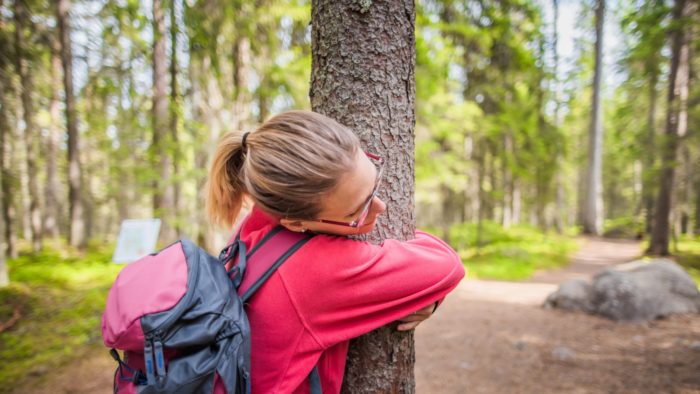
Regardless of the modern proliferation of electronic devices, people still depend upon nature in numerous ways. This picture is from Seitseminen National Park, north of Tampere.Photo: Laura Vanzo/Visit Tampere
You’ve heard of the carbon footprint, a measure of negative environmental effect, but do you know about the carbon handprint? Lappeenranta University in southeastern Finland and the VTT Technical Research Centre of Finland developed and defined the term “carbon handprint” to assess the positive environmental impact of a product or service. In fact, the carbon handprint has evolved to become an “environmental handprint.”
Zeroing in on zero emissions
Finnish company Wärtsilä, known for technology solutions in the marine transport and energy sectors, has established Zero Emission Marine, a project cofunded by Business Finland. The goals are to build a zero-emission maritime transport ecosystem and to develop sustainable technology solutions for the energy sector. That will reduce their greenhouse gas emissions by 60 percent by 2030, with all products in the ecosystem becoming carbon neutral or carbon negative by 2050.
Circular world

Founded in 2017 by the Finnish Innovation Fund, Sitra, the World Circular Economy Forum is held in Rwanda in 2022.Illustration: Topias Dean/Sitra
The World Circular Economy Forum “brings together business leaders, policymakers and experts to present the world’s best circular economy solutions,” according to the founding organisation, Sitra, a Finnish innovation fund that focuses on future-oriented study and research. First held in 2017 in Helsinki, the event happens in Rwanda in 2022. In “a fair and competitive circular economy,” writes Sitra, “everyone can use, create and benefit financially from services that are based on sharing, renting and recycling.”
Wood you, could you, in a house?
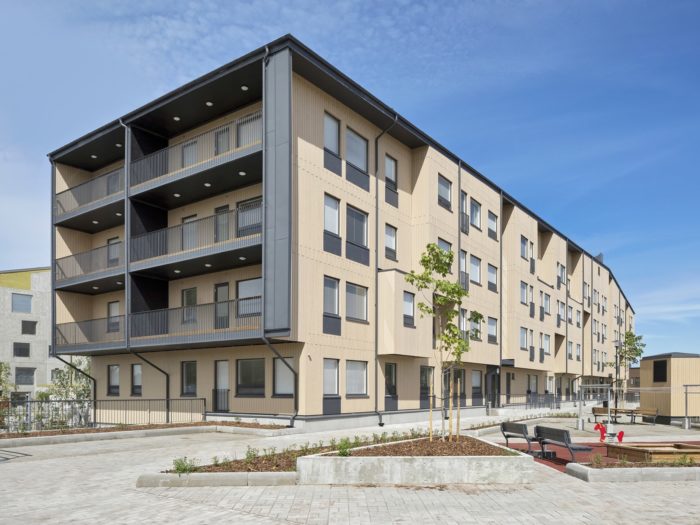
Linnanfältti, located in the southwestern Finnish city of Turku, is a new neighbourhood of wooden low-rise apartment buildings.Photo: Wellu Hämäläinen
The UK’s Guardian newspaper cites estimates that concrete accounts for 4 to 8 percent of the world’s total CO2 emissions. Wood is one alternative in architecture. While it has long been used to build houses, new processes also make wood a viable material for multistorey apartment buildings and other large spaces. It’s light, strong and sustainable.
Out of the woods
Just west of Helsinki, Aalto University offers a one-year program about wood in architecture and construction. In the northern Helsinki neighbourhood of Honkasuo, newly built wooden houses exemplify city planning that includes low-carbon construction principles. In a five-house pilot project there by the Ministry of the Environment, the houses’ materials and construction methods were selected to keep the carbon footprint as small as possible.
Enlightening e-vehicles
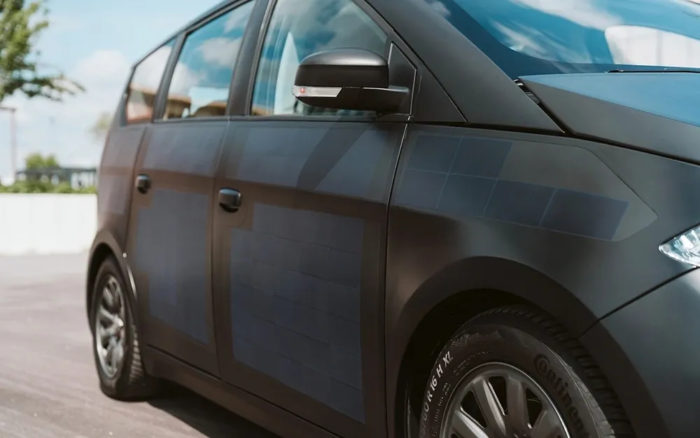
If you look closely, you can see that Finnish company Valoe’s rectangular solar cell assemblies are integrated into the metal surface of this car by Sono Motors of Germany.Photo: Valoe/Sono
Solar cell assemblies by Valoe, a company from the Finnish town of Mikkeli, are in validation tests in self-charging electric vehicles manufactured by Sono Motors in Germany. Valoe is also developing integrated solar systems for electric city ferries built by Eker Design in Norway.
Charging ahead
Kempower, a Finnish provider of electric vehicle charging technology, has launched its products on the North American market. Its chargers enable more rapid charging than the majority of the existing charging points there.
Hard-working textile recyclers
Touchpoint makes workwear – clothes for people with jobs in healthcare, retail, hotels, restaurants and cleaning. The company emphasises sustainability in its materials, using recycled polyester and recycled cotton, as well as fibre made from wood cellulose by another young Finnish company, Spinnova. As for worn-out workwear that is ready to be discarded, Touchpoint’s subsidiary, Rester, has started a textile recycling plant in Paimio, southwestern Finland. It produces recycled fibre that can be made into yarn, fabric, insulation, acoustic panels and more. So Touchpoint can take old workwear off its customers’ hands, as well as selling them new clothing. One of Touchpoint’s investors is Finnish asset management firm Taaleri, which founded the world’s first private equity fund focused on circular economy.
Looking to nature for answers

Growing in northern swamps, cloudberries are not always easy to find.Photo: Reijo Haukia/Lehtikuva
The cloudberry is found in far-northern swamps, looks something like an overgrown orange raspberry and is prized for its delicate flavour. Helsinki University Hospital, the VTT Technical Research Centre of Finland, the University of Turku and their partners have found that compounds derived from cloudberry seeds show significant antimicrobial activity against the antibiotic-resistant hospital bacteria MRSA. This could help treat and prevent MRSA infections. Using a patented, environmentally friendly process, researchers extracted the compounds from “sidestreams” – parts of the berries that would otherwise go unused by the berry industry. Other Finnish plants may contain similar compounds that are even more effective, the researchers say.
